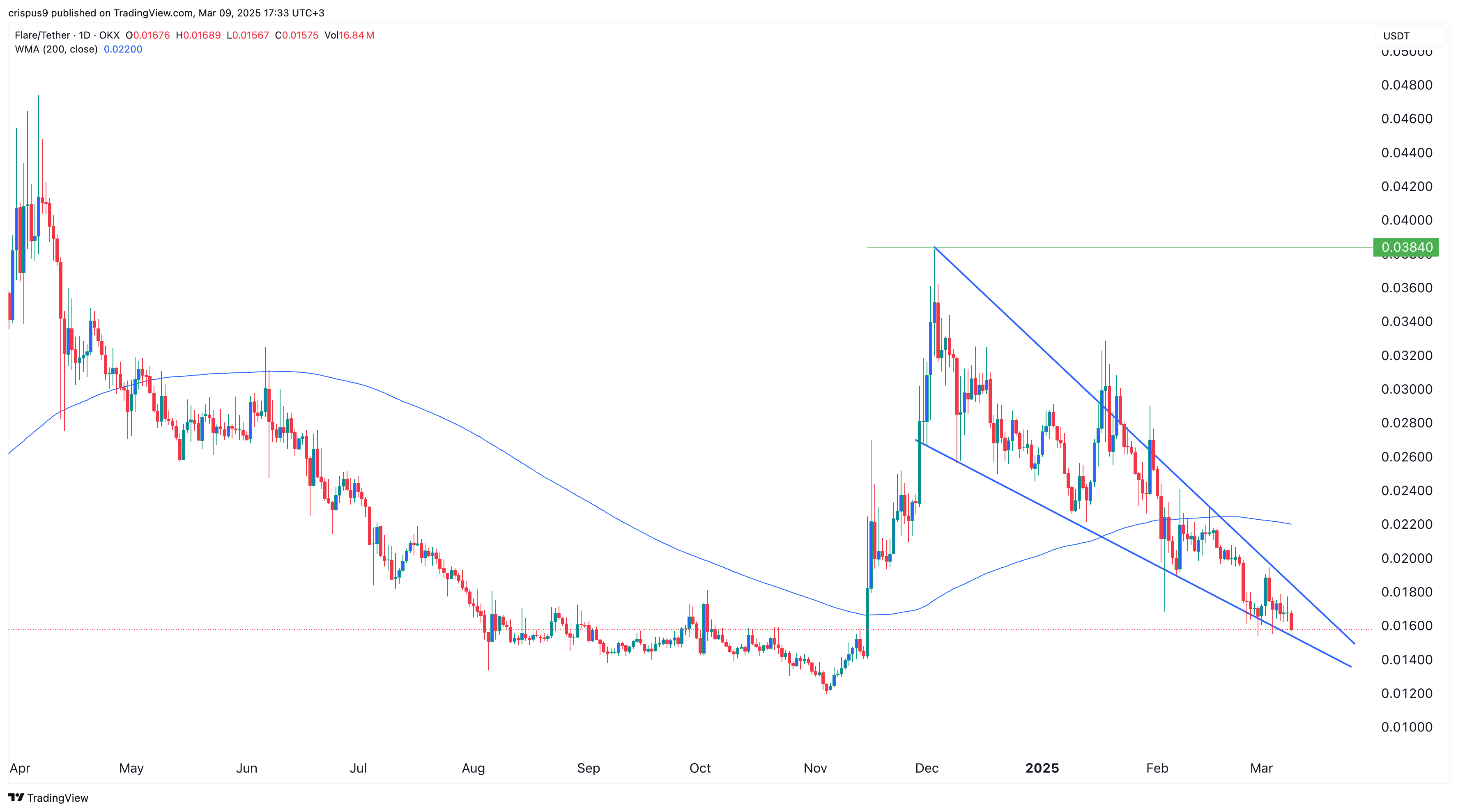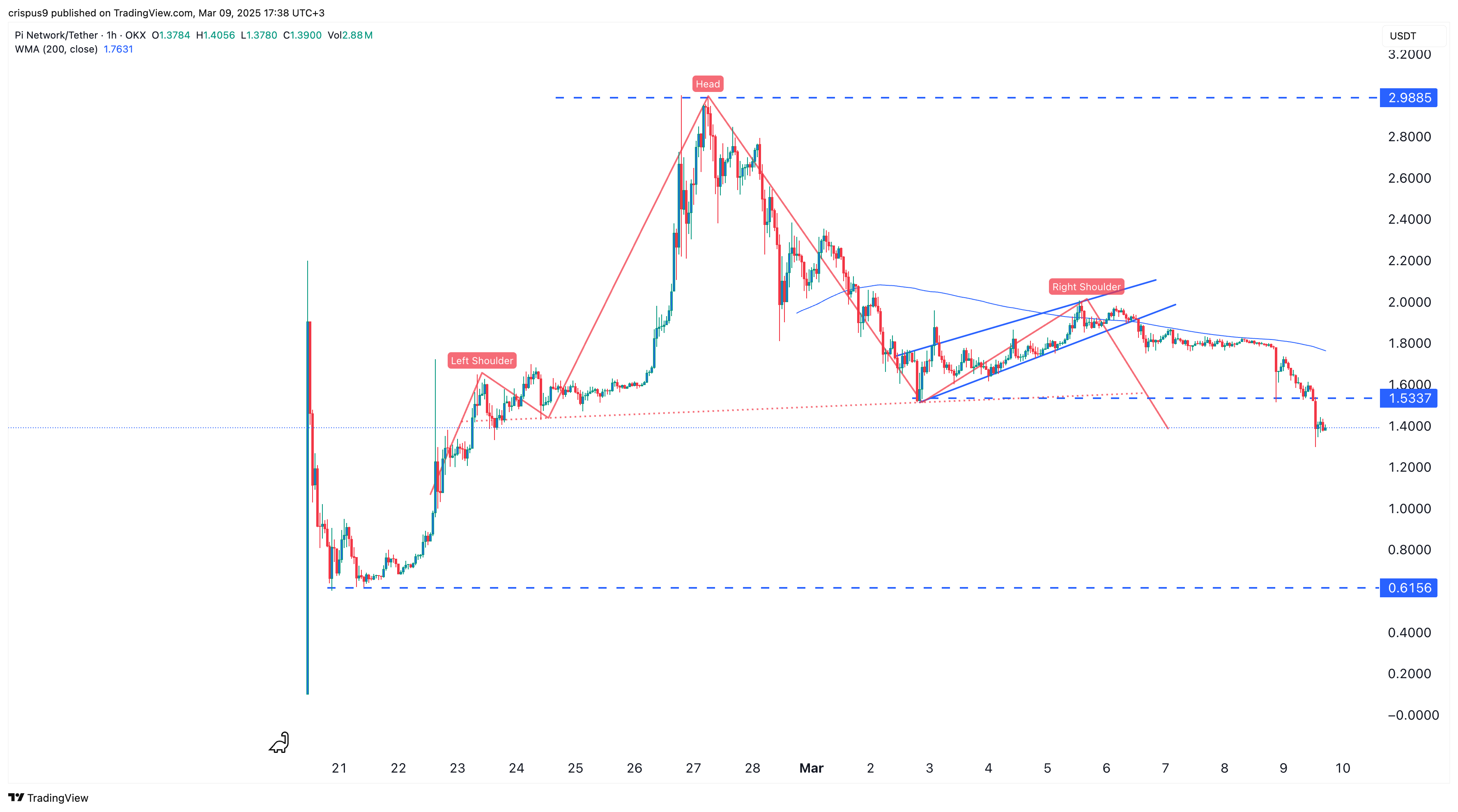Cryptocurrencies are extremely unstable following President Donald Trump’s on-again, off-again 25% tariffs on imports.
Bitcoin (BTC) dipped beneath $83,000 on Tuesday, March 4 when the tariffs went into impact; by Thursday, sure tariffs have been suspended or delayed and Bitcoin bounced again above $90,000.
On Sunday, it dipped beneath $83,000 once more and is down 11.8% over the previous seven days. Ethereum (ETH), in the meantime, is hovering above $2,000 and is down 18.2% over the identical timeframe.
As we head into a brand new week, crypto.information selected to highlight three altcoins: Arbitrum (ARB), Flare (FLR), and Pi Network (PI)
Arbitrum
Arbitrum has been in a robust downward development for about two years. In 2023, it peaked at $2.4253 and have become the second-biggest layer-2 blockchain within the trade.
It will definitely dropped to a document low of $0.312.
Why did it crash? Arbitrum is a extremely dilutive cryptocurrency. It has a circulating provide of 4.41 billion towards a complete provide of 10 billion cash. It releases 479,068 new tokens every day, and this week, it’s going to unlock 93.2 million. These unlocks will go on till April 2027.
Arbitrum token has been in a steep downward development previously few days, and has simply dropped beneath the important thing assist at $0.4310. It has remained beneath the 50-day transferring common, whereas the Relative Energy Index has drifted downwards.
Subsequently, the token will doubtless preserve falling forward and after the token unlock. If this occurs, the subsequent ARB value degree to look at shall be at $0.25.
Arbitrum was developed by Offchain Labs, a New York-based firm based by Steven Goldfeder, Ed Felten, and Harry Kalodner.
Flare
Flare is one other high cryptocurrency to look at because it unlocks tokens value $28.16 million, equal to 2.90% of these in circulation. It has already unlocked about 68% of all tokens in circulation.
Flare token has retreated from a excessive of $0.03840 on December 3 to $0.01575, its lowest degree since Nov. 15.
It has crashed beneath the 50-day transferring common. On the optimistic aspect, it has shaped a falling wedge sample whose two traces are about to converge. Subsequently, there’s a probability that the Flare value will bounce again, and presumably retest the 50-day transferring common at $0.0220.

Flare was developed by Flare Networks, based by Hugo Philion, Sean Rowan, and Francisco Riordan. The Its blockchain goals to allow good contracts and interoperability with non-smart-contract networks like Bitcoin and XRP.
The token performs a number of roles inside the ecosystem, together with governance, the place holders can vote on community proposals, and participation within the Flare Time Sequence Oracle, a decentralized oracle system the place customers can earn rewards.
Moreover, FLR can be utilized as collateral inside decentralized finance (DeFi) purposes and to pay for transaction charges on the community.
Pi Network
Pi Network, the favored tap-to-earn token, has crashed previously few days, reaching a low of $1.3960, its lowest degree since February 2023. This decline occurred after it emerged that Pi would unlock over 1.4 billion tokens this yr.
Pi coin value has dropped beneath the important thing assist at $1.5337, the neckline of a head and shoulders sample. It has additionally shaped a small bearish pennant sample and moved barely beneath the 50-period weighted transferring common.
Technicals counsel that the worth of Pi will proceed falling as sellers goal the psychological level at $1.00.

The opposite high cryptocurrencies to look at this week shall be Aptos, Perpetual Protocol, and Apecoin, which is able to unlock tens of millions of tokens. Mainstream cash like Bitcoin, Ethereum, and XRP can even be in focus this week as merchants watch their value motion after remaining in a decent vary for weeks.
On the optimistic aspect, a possible itemizing by high exchanges like Binance and Coinbase could present some reduction.
Pi Network was created by Stanford graduates Dr. Nicolas Kokkalis, Dr. Chengdiao Fan, and initially Vincent McPhillip.


